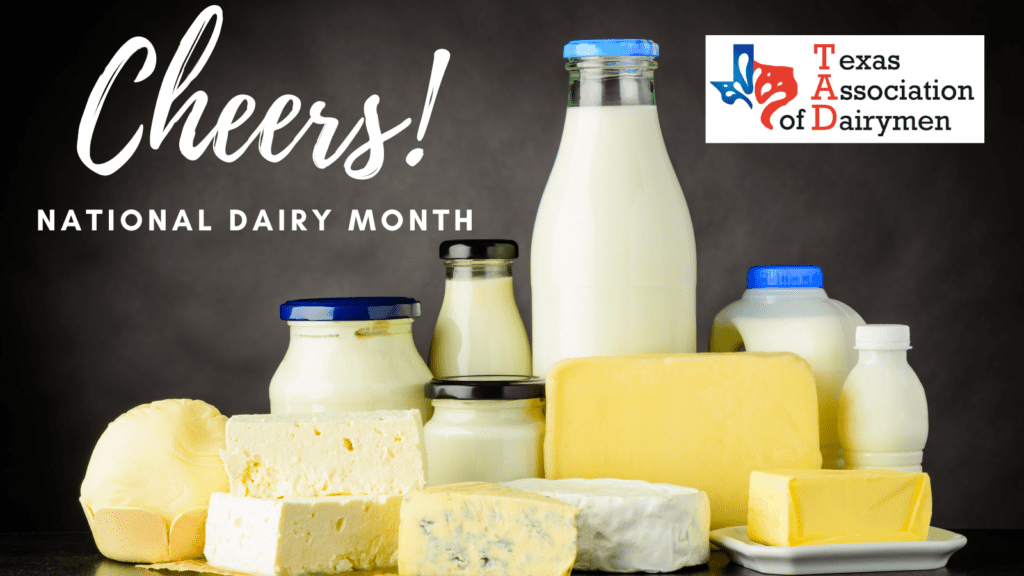
Return to June 2023 newsletter
National Dairy Month 2023: Every Texan can – and should – enjoy the abundance of dairy
By Darren Turley
Executive Director, Texas Association of Dairymen
If every Texan raised a glass of milk to toast National Dairy Month, they’d all be able to do so with milk produced by dairy farmers and cows in the Lone Star State – and still have some milk left over. That’s mind-boggling to me as both a fourth-generation Texan and a second-generation dairy farmer.
Last year, Texas dairies produced 1.9 million gallons, or 30.4 million glasses, of milk, while the state’s population broke the 30 million mark in March. Both amazing statistics are worth celebrating.
And neither the growth of the state’s milk production or population show any signs of slowing.
Here’s an example of how both intersect: Cacique Foods in May celebrated the opening of an $88 million dairy processing plant in Amarillo and announced it was moving its headquarters from Southern California to Irving, Texas. Cacique is following numerous other companies that have relocated to Texas in recent years, bringing jobs and an economic boost to Amarillo, Irving and the state as a whole, as well as growing the dairy industry’s $50.3 billion impact on our state.
Just as important to the Texas dairy industry is that the new 200,000 square foot Cacique processing plant, which soon will fully operational, will give dairy producers in the region another outlet for its milk. The company’s CEO says the plant will take up to 40 milk tankers a day to make its cheeses and creams, which will end up in groceries across the nation.
That will be a tremendous help. Texas has doubled its milk production since 2008, largely due to enormous growth in the number and size of dairies in the Panhandle region starting in 2006. Since then, we’ve seen Southwest Cheese, Hilmar Cheese, Lone Star Milk Producers and Select Milk Producers open facilities to make cheese, powder milk, butter and other dairy items with Texas milk.
As these new facilities opened, milk production in Texas grew to meet the added processing capacity. Even the addition of Cacique won’t end the shortage of processing outlets to take the mounting volume of milk our dairy farmers produce. In fact, some predict that Texas could easily surpass Idaho to become the nation’s third largest milk-producing state in the next two years.
What will we do with even more milk, if we’re struggling to find outlets for what we produce now?
A number of new processing plants are planned or under construction, such as Leprino Foods Company’s 850,000-square-foot dairy foods manufacturing plant being built in Lubbock, will help Texas producers in the coming years.
More Texas milk also could end up overseas. By 2050, the world will have an estimated two billion more mouths to feed, with the largest growth expected in Asian and African countries that already struggle to feed their populations. U.S. dairy exports – which set new volume and value records in 2022 – are strong and are expected to grow.
If it sounds like I’m presenting “too much milk” as a problem – well, it’s a “problem” I’m happy to celebrate. I encourage all Texans to do their part during National Dairy Month, as well as the rest of the year, to draw down the state’s excess of milk by enjoying plenty of milk, ice cream, cheese or their other favorite dairy product.


